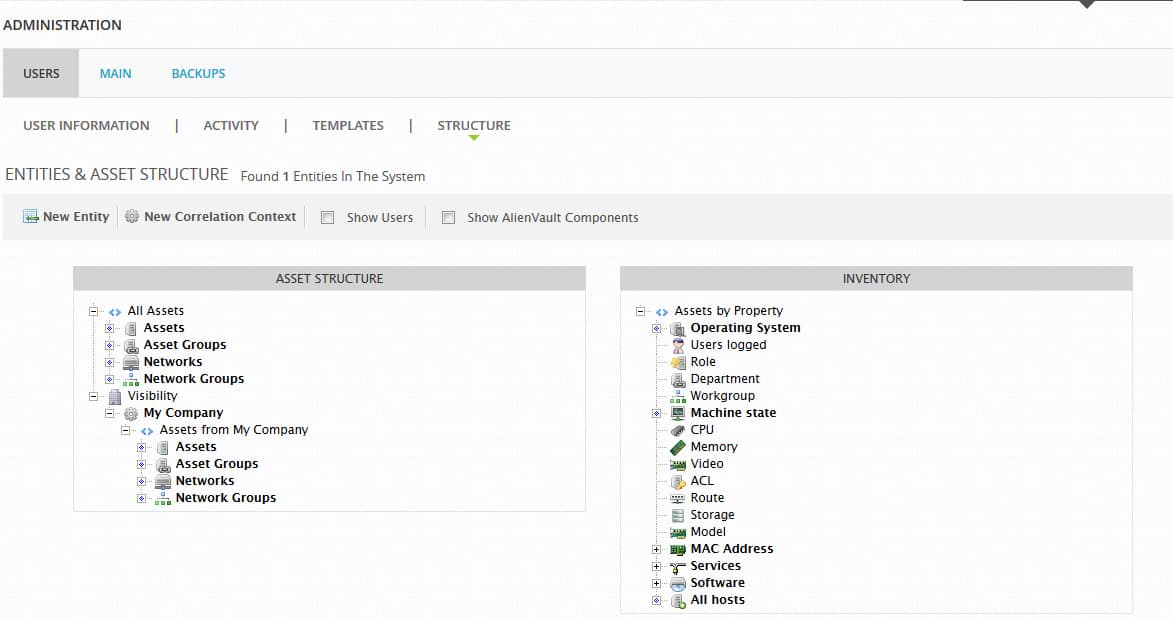You are here: Docs>Sheriff Web>UserGuides>SheriffCSMDocumentation>UserGuide>UserAdministrationInSheriffCSM>UserAuthorization>EntitiesAndAssetsStructureTreeFields (07 Jun 2022, SheriffCyberSecurity)Edit Attach
Up
Previous Next Sheriff CSM™ Entities and Assets Structure Tree Fields Use the Entities and Assets Structure tree to create, modify, and delete correlation contexts and entities. Access the Entities and Assets Structure tree from Configuration > Administration > Users > Structure. The upper part of the page includes the fields shown in the Entities and Assets Structure Tree Fields table.
Entities and Assets Structure Tree Fields
The upper part of the page includes the fields shown in the Entities and Assets Structure Tree Fields table.
Entities and Assets Structure Tree Fields
On the lower part of the page, there are two columns.

Previous Next Sheriff CSM™ Entities and Assets Structure Tree Fields Use the Entities and Assets Structure tree to create, modify, and delete correlation contexts and entities. Access the Entities and Assets Structure tree from Configuration > Administration > Users > Structure.
 The upper part of the page includes the fields shown in the Entities and Assets Structure Tree Fields table.
Entities and Assets Structure Tree Fields
The upper part of the page includes the fields shown in the Entities and Assets Structure Tree Fields table.
Entities and Assets Structure Tree Fields
| Field | Purpose |
|---|---|
| New Entity | Lets you create a new entity. |
| New Correlation Context | Lets you create a new correlation context. |
| Show Users | Toggles the display of users in the entities and asset structure. |
| Show Sheriff Components | Toggles the display of Sheriff components in the entities and asset structure. |
The left column contains an asset structure tree that displays the following:
- Assets
- Asset groups
- Networks
Viewing User Hierarchy
Sheriff CSM offers administrators the ability to review the organization of users within entities and correlation contexts. To see how users are organized From the Sheriff CSM web interface, go to Configuration > Administration > Users > User Information and select Multilevel Tree, on the far right-side of the page.
Edit | Attach | Print version | History: r8 < r7 < r6 < r5 | Backlinks | View wiki text | Edit wiki text | More topic actions
Topic revision: r8 - 07 Jun 2022, SheriffCyberSecurity
Copyright 2020 Sheriff Cyber Security, LLC. All rights reserved.
